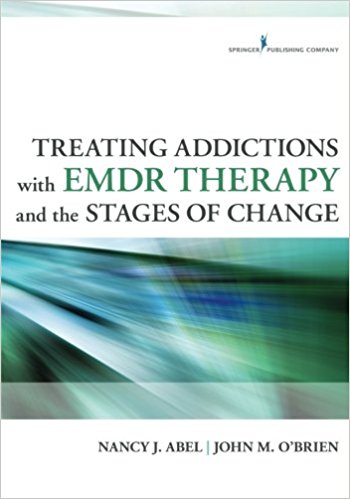Title: "Treating Addictions With EMDR Therapy and the Stages of Change"
Authors: Nancy J. Abel and John M. O'Brien
Mental health practitioners must be prepared to treat addiction-related issues affecting up to 50% of mental health clients whether or not clients present with addiction as a primary concern. This practical roadmap to the treatment of addictions advocates an underutilized yet highly effective method of intervention: eye movement desensitization and reprocessing (EMDR) therapy. It is the first book to integrate the Stages of Change Model with EMDR's phases for successful treatment outcome. The book addresses the scope of problems relating to addiction, including relevant statistics and descriptions of substance and process addictions, and considers the connection between addiction and trauma. While focusing on the use of EMDR therapy in treating addictions, the book also considers traditional models for each stage of treatment so interventions can be individualized according to the needs of each client.
The authors describe in detail the Transtheoretical Model, tracing its development and theoretical foundations. They discuss each of its stages in depth, presenting and integrating EMDR interventions used by therapists in each stage. The interventions are useful for helping clients at any motivational level. Case vignettes in each chapter illustrate how EMDR techniques are used, and several detailed cases are provided at the end of the book. The appendix features additional resources and EMDR protocols. The text will be useful for therapists currently using EMDR for addiction treatment as well as those using other modalities who are seeking an effective alternative.
Key Features:
- Provides a practical roadmap to using the Stages of Change Model and EMDR therapy for effectively treating addictions
- Addresses substance and process addictions in depth
- Focuses on the trauma addiction connection and treatment options
- Describes each Stage of Change and EMDR protocols and interventions for each stage
- Includes case vignettes and detailed case examples








